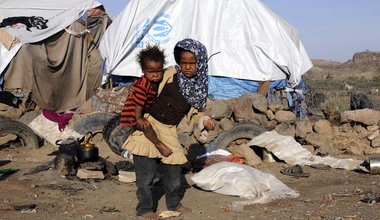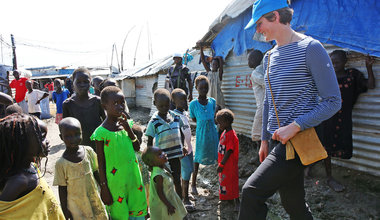Media coverage frames public thinking on migrants and migration – UN report
 Changes in traditional media and growing use of social media are offering new avenues for “migrant-led” media and journalism as well as a unique opportunity for migrants to highlight their concerns and contributions – in their own words – the United Nations International Organization for Migration (IOM) has said.
Changes in traditional media and growing use of social media are offering new avenues for “migrant-led” media and journalism as well as a unique opportunity for migrants to highlight their concerns and contributions – in their own words – the United Nations International Organization for Migration (IOM) has said.
“Ranging from films and newspapers to tweets, [media] coverage may have portrayed migration in one way or another, or simply raised it as a topical issue,” said the UN agency in the latest edition of its flagship report, the World Migration Report.
"Migration coverage is not only positive or negative, but also presents a variety of different issues, narratives and viewpoints […] identifying how matters are framed is important because […] media frames affect how people think about migration,” it added.
In the report, IOM argues that while much research evidence, around the world, points to media associating migrants with “bad news,” such negativity is not necessarily unique to migration coverage, as journalists “generally tend to emphasize problems across most topics.”
However, there has been movement towards more positive – or at least more neutral – coverage of migration issues across several destination and origin countries that does not seem to be attributable to any particular event, it notes.
At the same time, rapid multiplication and diversification of social and online media brings potential for good but also pitfalls – in particular, “fake” news.
Citing examples from numerous country, IOM expresses that such news items likely represent only the tip of the “fake news iceberg.”
Migration coverage is not only positive or negative, but also presents a variety of different issues, narratives and viewpoints […] identifying how matters are framed is important because […] media frames affect how people think about migrationIOM
“Social media make it easy to approach specific audiences with political messages and materials, in ways that can be hard to detect and scrutinize. Such microtargeting of persuadable audiences, identified and contacted through their social media activity, is a growing phenomenon,” it warns.
Moving ahead, the UN agency has urged the need for more research into the role of media in transit and origin countries – and particularly migrants’ own use of, and preferences for, different types of media.
“This is especially important for understanding how and to what extent information sources shape perceptions,” it says, stressing that greater evidence on whether and how different types of messages and emotions shape public perceptions and policy activity on mobility would be valuable both within and beyond the world of research.
IOM also calls for more attention to different media systems and how they may or may not produce different kinds of content regarding migration, highlighting that the presence of highly differentiated experiences around the world suggests that greater levels of public debate about the appropriate role of media in specific contexts will move forward the conversations already happening in policy, civil society and research.
“Questions such as these will be debated differently across varied local, national and international contexts,” reads the report.
“As a result, both producers and consumers of research should recognize that there is no single, universal way to sum up the role of the media, or to change media coverage of migration.”
The 2018 World Migration Report, the ninth in the series and the first since IOM became a UN agency, also focuses on themes such as transnational connectivity and violent extremism and social exclusion.
It was launched Thursday at the IOM’s 108th Council meeting, in Geneva.
 UN
UN






